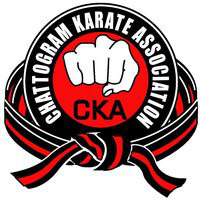Karate History
The Chittagong Karate Association is a prominent karate organization in Bangladesh, specifically based in the Chittagong region (now renamed as Chattogram). The association is dedicated to promoting the martial art of karate and fostering the development of physical fitness, discipline, and self-defense skills among practitioners.
Early History:
The roots of the Chittagong Karate Association trace back to the late 20th century when
martial arts, particularly karate, began gaining popularity in Bangladesh. Karate was
introduced to the country by various Japanese and Korean martial artists in the 1960s and
1970s.
During this period, karate clubs and training centers started to appear in major cities,
including Chittagong, which had a growing interest in physical fitness and self-defense
disciplines.
In Chittagong, the movement to establish a formal karate association was led by passionate
martial artists and local trainers who were either trained in Japan, Korea, or other
regions, or had received their black belts through other channels.
Formation of the Chittagong Karate Association:
The Chittagong Karate Association (CKA) was officially formed in the early 1980s. It aimed
to unite the various karate practitioners, clubs, and schools in the Chittagong region under
a single banner. The association was established to:
Promote the practice of karate across the region.
Organize local, national, and international tournaments.
Ensure standardized training and certification for karate practitioners.
Build a sense of unity and brotherhood among karatekas (karate practitioners).
Influence and Growth:
The growth of the Chittagong Karate Association parallels the broader expansion of martial arts in Bangladesh. It has helped spread awareness about the health benefits of karate, such as improved physical fitness, mental focus, and stress management. The association has trained and nurtured many local champions who have gone on to represent Bangladesh at international karate competitions.
In recent years, as interest in martial arts continues to grow in Bangladesh, the Chittagong Karate Association remains a key player in the development of karate in the region, working to ensure the sport remains accessible and continues to thrive.
Conclusion:
The Chittagong Karate Association remains a significant institution in the promotion of karate in Bangladesh. Its contribution to the sport, both at the grassroots and elite levels, has made it a leading body in shaping the future of karate in Chittagong and the wider country. Through its commitment to training, competition, and community building, the association has left an indelible mark on the martial arts landscape in Bangladesh.

